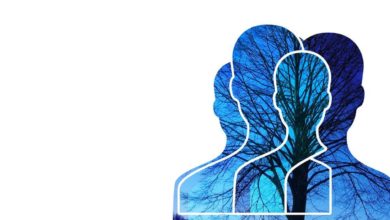[ad_1]

Your customers are human beings. Your employees are human beings. And yes, you are human too.
But what does it mean to be human?
As humans, we are conscious of certain names, dates, memories, beliefs, concepts, and aspects of our identity.
This collection of details are all above the surface. They are available to our conscious minds, retrievable by our thinking brains.
Below the surface, however, a vast reservoir of energy and instincts exists of which humans are not aware. Psychology calls this subterranean the subconscious mind and the unconscious mind.
Peering Below the Surface
The subsconscious is the home of our emotional lives, the human feelings that are sometimes beautiful, but oftentimes ugly.
We prize emotions like love, compassion, kindness, and joy. We tend to deny or repress emotions like jealousy, envy, anger, desire, and despair.
To be sure, both positive and negative emotions are entirely human.
Behind every human interaction is a busy conference of emotional exchange. Much of this exchange lies outside of the average person’s awareness. This emotional undercurrent largely shapes our behavior, our decisions, and our life experiences.
Then, there’s the unconscious. Psychologists divide the unconscious into many different levels.
The personal unconscious is unique for each individual, based on the experiences, education, and temperament of that individual.
A group unconscious is the unconscious of a social group or culture, including its shared beliefs, myths, and ideals.
Going even deeper, there are universal archetypal structures in what Carl Jung labeled the collective unconscious. He called it “collective” because he believed it represented symbols and images shared by all of humanity.
Archetypes in the collective unconscious, you can say, are what bind all people together in the human family.
Collectively, these levels comprise unconscious processes that influence our behavior in largely unexamined ways. And, the vast majority of our behavior and decisions are derived from these processes.
Indeed, there’s a lot of stuff going on in human beings of which we are not aware.
Connecting Thoughts With Feelings
The task of leaders is to inspire their organizations with a compelling vision and to rally around their customers.
Both of these tasks call leaders to probe below the surface to better understand what makes human beings do what they do.
The best leaders, those that outperform their peers, tend to have greater emotional intelligence. This means they are more connected with their feelings and with what motivates them.
Put another way, their thinking brain is in constant communication with their feeling brain. This integration gives them greater conscious access to what lies below the surface.
The better you understand yourself, the better you can understand others.
The more you know what drives you, the easier it is to navigate through difficult conflicts within yourself and with coworkers. And, the more skillful you’ll become at understanding and serving your customers.
Why?
Embracing Our Shared Humanity
Above the surface, at the conscious level, we appear very different from one another.
But the further down the rabbit hole we go, the more alike we become. Our individual differences fade away as we come closer to our shared humanity.
The better you know yourself, the easier it is to project yourself into another person’s shoes—whether it’s a fellow employee or a customer.
You can see the world through their eyes and feel what they are likely feeling. From this space, you can have true empathy. You can feel your own heart and connect with the hearts of others.
With this shared understanding, magic can happen within your organization. It can transform your relationship with customers too.
[ad_2]
Source link






